#calflora
Photo


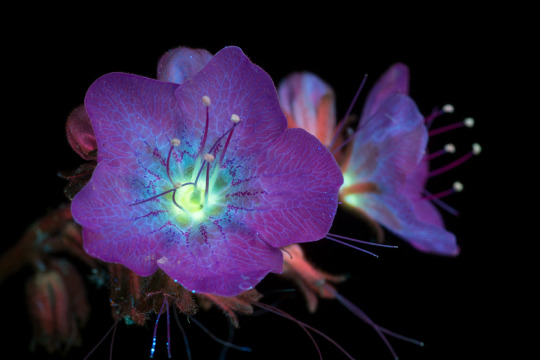
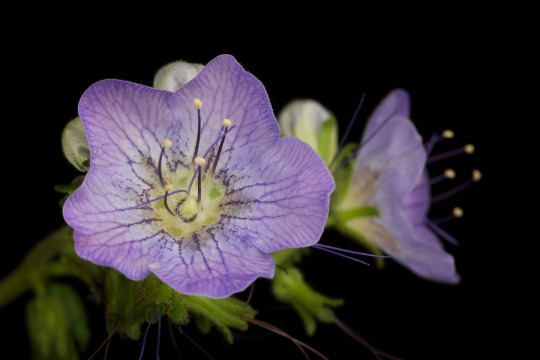

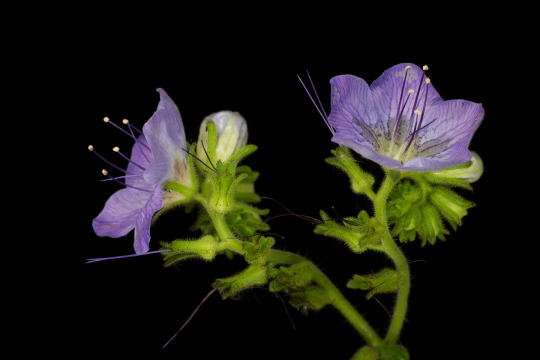
Phacelia grandiflora is from one of my favorite plant genera and is one of my favorites even from this genus. Despite how commonly it occurs through its range, P. grandiflora is limited to near-coastal regions and the south side of the Transverse Ranges through the lower third of California and a touch into Baja California. No two plants produce the same flower patterns – some deeply blue-purple, some pale, some with a dark center and pale tips. Growing up to about three feet tall, they thrive in disturbed areas and can on occasion dominate a space, though they usually coexist with other Phacelias such as P. brachyloba and P. cicutaria. The large flowers have a strange pungent odor (sweet, with a strong bias of burning rubber) and feature a prominent nectar cup. They are a favorite of native bees, particularly larger bumble bees which will make sure to pay thorough visits to each flower. The plants can produce numerous small seeds which will grow the following spring with very little water required to produce prolific and showy blooms.
#phacelia#grandiflora#boraginaceae#calflora#nativeplants#CAnative#pollinatorecology#glowingplants#uvivf#fluorescent#neon
1K notes
·
View notes
Note
Do you have any good resources for west coast frog identification? I have ‘The Book of Frogs’ textbook but it’s a pain to leaf through! I’m wondering is there’s a site like Calflora but for frogs or other wild life maybe?
If you are trying to identify things that you have decent photos of, iNaturalist has a very good automatic recognition feature.
Otherwise, there's a fieldguide to that area that has decent reviews.
71 notes
·
View notes
Text
So I am once again taking the opportunity to plug the greatest website on the internet, trilobites.info—a site whose 90s design is nearly as much of a fossil as its eponymous invertebrates are. But I also just discovered diatoms.org, a (modern and professional looking, alas) site about diatom conservation and identification. Then there's WormBook, an extremely comprehensive collection of information on the nematode species C. elegans (which is often used as a model organism, so a lot of research has been done). And there's also Calflora, an online database of wild plants found in California (probably other regions have something similar as well).
193 notes
·
View notes
Text
@snufflupagus @heyhope
if you guys want to see a really cool resource to find and learn more about california native plants, check out this website:
e.g. if i specify i want to find a plant native to san bernadino county, i click "native" then the county then i get lots of results. a lot of parameters you can use. i like this borrego milk vetch (herb) that popped up
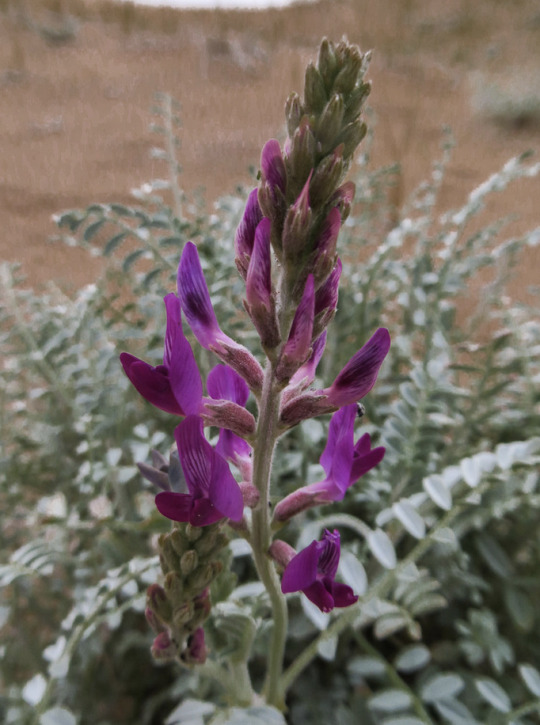
12 notes
·
View notes
Text
i looked up my area on calflora (native plant database) and there were literally no trees lmao
#why everyone plants ficus and eucalyptus that destroys pipes and sidewalk#needed it to get big quick in the 50s when developers decided to simulate Ohio in a region that gets 10 inches of rain a year
3 notes
·
View notes
Text
Botanizing the PCT
A Webinar Series with Matt Berger
I’ve spent lots of time on the PCT awestruck by the amazing biodiversity along the trail. Plant communities that change with elevation, with annual precipitation, and seasonally. From the Mojave to lush Douglas fir forests of the Washington Cascades, from the fragile alpine plant communities to those that thrive on the serpentine ridgelines of the Klamath Knot, from the carpets of blooming meadows on Mt. Hood or in Jefferson Park to the cacti gardens above Scissors Crossing. Here is a wonderful opportunity to dig a little deeper.
For $10, you can participate in Matt Berger’s 5-part webinar series on the plants of the PCT. These will occur on five Tuesdays between February 16 and March 16, 2021, from 7-8 pm (Pacific time). All sessions will be recorded.
You can sign up here: https://backcountrypress.com/product/plants-pct-matt-berger/
Rees Hughes

After two 2,650 mile thru-hikes botanizing the Pacific Crest Trail, Matt Berger shares both the extraordinary and everyday plants along each region of the trail in this 5-part webinar. This series of presentations will take us on an armchair journey from south to north and highlight the rich biodiversity of plants along the way while weaving in stories from the trail — hitchhiking adventures, animal encounters, epic trail magic, and more.

The series consists of 5 one hour webinars celebrating each major section of the trail. Matt will share many of the plants found along the way, featuring both common and rare plants. The trail passes through remarkable assemblage of landscapes including subalpine sky islands above the southern California deserts, the famed Sierra Nevada, and the volcanic Cascades in northern California, Oregon, and Washington.
The five presentations are:
Southern California Mountains and Desert (February 16th)
The Sierra Nevada of central California (February 23rd)
The Cascades and Klamath Mountains of northern California (March 2nd)
Oregon’s Cascades (March 9th)
Washington’s Cascades (March 16th)
Matt spent time documenting all the plants and uploading them to Calflora and iNaturalist for scientists to be able to use the data in studies and range maps. He will share how this process works so others can contribute to this data set. At the end of each presentation, Matt will take time to answer questions, talk with folks or just geek out some more about plants!

12 notes
·
View notes
Photo

endless flora
86 notes
·
View notes
Text
monkeyflower species need to be more widely used in gardening!!!!!! like look at these, theyre absolutely delightful
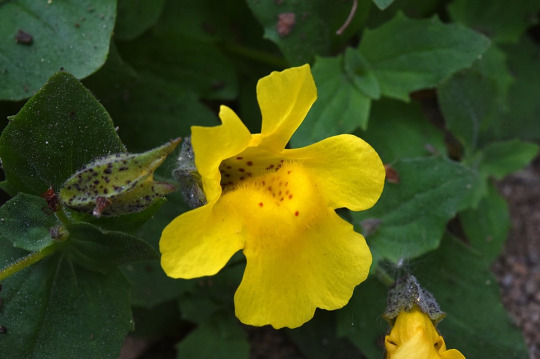


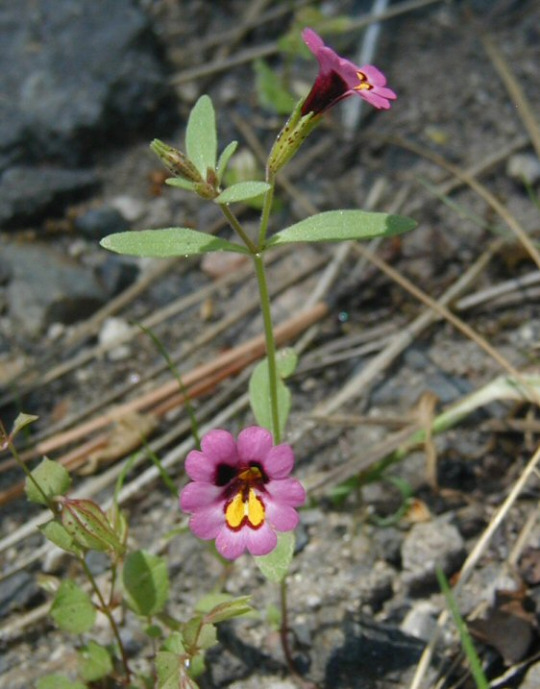
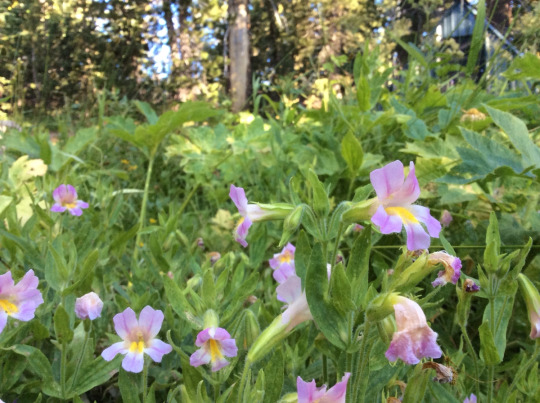
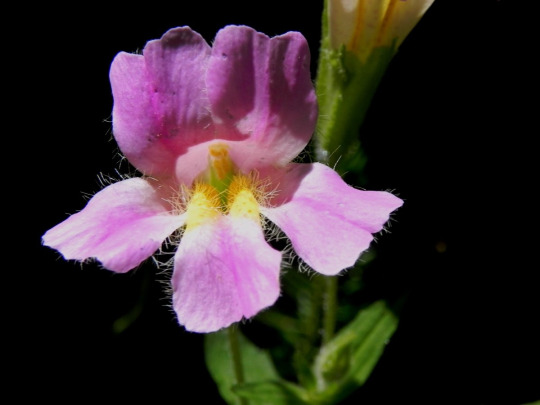
if you have an alpine, subalpine, chaparral, or savanna-adjascent garden please consider planting an erythranthe this fall, theyre adorable and have native species almost everywhere in california :) this concludes my Erythranthe propaganda post
#Botany#Erythranthe tilingii#Erythranthe palmeri#Erythranthe montioides#Erythranthe filicaulis#Erythranthe erubescens#find your native monkeyflower!!!!#they are so low maintenance where they're native you can just stick them anywhere and you get a nice little monkeyflower :D#not my photography#photos courtesy of uc davis calflora :)
3 notes
·
View notes
Text
Woodwardia fimbriata, Giant Chain fern
Woodwardia fimbriata, Giant Chain fern
Blechnaceae
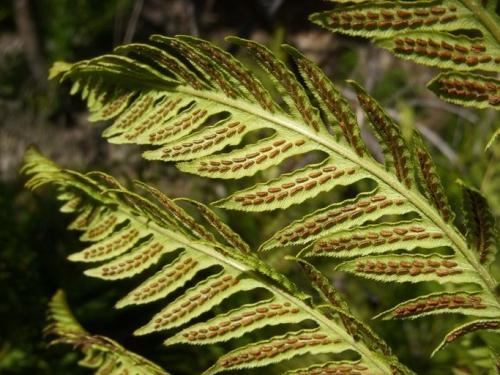
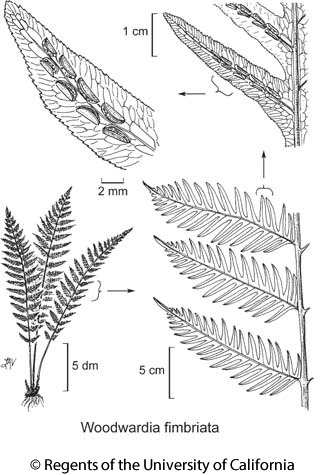
KEY
terrestrial plant with no flowers or bulbs sporangia present
Herbs reproducing by spores released directly from sporangia, the sporangia variously located [on abaxial leaf face, [LYCOPHYTES and FERNS]
Leaves with well developed blades; veins many
Plant terrestrial or strongly emergent if in wet soil, leaf 1pinnate, sporangia borne on aerial portion of leaf
Leaves all alike or nearly so, the fertile [sporangium-bearing] blades very similar in size and shape to sterile blades.
sporangia borne on underside of leaf blade in distinct sori. Sori borne away from margin on underside of leaf or leaflet new leaves generally coiled, unrolling as they develop
indusia present
. Veins of leaf segment forming a network; sori generally 2–4 mm, linear-oblong, end-to-end in rows parallel to midvein of leaf segment — leaves 1 pinnate with deeply pinnately lobed pinnae
Blade 1-pinnate, pinnae deeply pinnately lobed; leaves of ± 1 kind; sori many per lobe , oblong , 2–4 × longer than wide, end-to-end along each side of lobe midrib, some oblong to linear along costa also
DESCRIPTION
Perennial Fern, California Native, Evergreen found near streams, springs, seeps
Rhizome: short and stubby.
Stipe/Petiole: has oragne/brown-straw colored scales
Leaf blade is 1pinnate with leaflet/pinnae deeply pinnately lobed. Has netted venation. Fronds 6-8ft. Pinnae biggest and middle, reduced lower and higher
Sori are oblong and line up end to end along both side of midrib. It looks like a chain stitch pattern
Taco shaped indusium covers sporangium on the sorus
Sources
https://www.instagram.com/p/CIWDwvBF0Cg/?utm_source=ig_web_copy_link
https://www.instagram.com/p/B77JtXlgInd/?utm_source=ig_web_copy_link
https://davesgarden.com/guides/pf/showimage/315846/
https://www.itis.gov/servlet/SingleRpt/SingleRpt?search_topic=TSN&search_value=17750#null
Plant Profile for Woodwardia fibriata (giant chainfern)
https://ucjeps.berkeley.edu/IJM_keys/IJM_fam_key.html
Woodwardia fimbriata
https://gobotany.nativeplanttrust.org/family/blechnaceae/
calscape
Calflora
#Woodwardia fimbriata#Giant Chain fern#woodwardia#blechnaceae#polypodiales#polypodiopsida#filicopsida#pteridophyta#tracheophyta#Plantae#lets be fronds#is botany even considered english#i sound like im speaking in tongues when read the jepson manual outloud'#botany names sound like harry potter spells.
5 notes
·
View notes
Photo

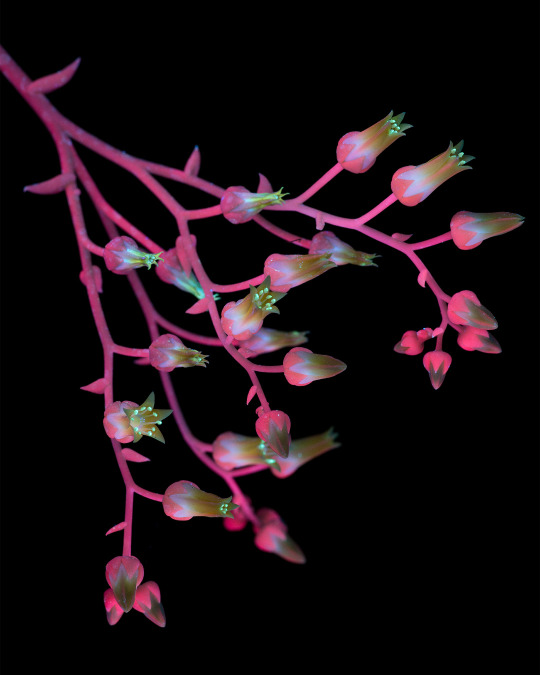
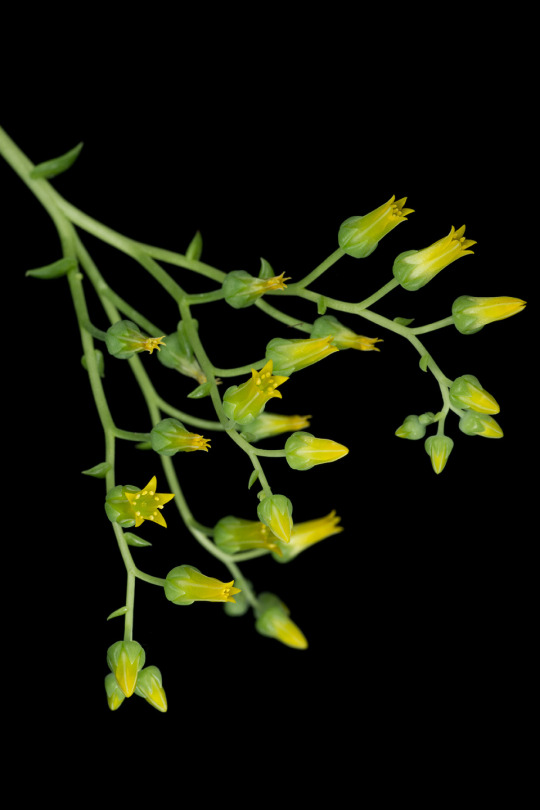



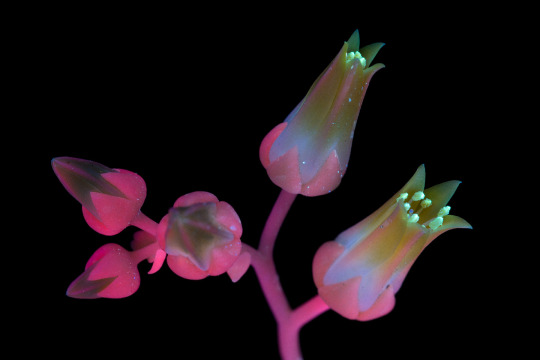
Dudleya cymosa ssp. pumila is a succulent native and endemic to California, meaning it cannot be found growing naturally anywhere else in the world. This plant is most often found on north-facing canyon walls and roadcuts throughout the transverse ranges (a series of mountains that run east-west through CA instead of the usual north-south.) Dudleya in general have special adaptations which allow them to survive challenging environments, in this case growing in the wet but coldest part of the year and surviving a long, very hot, and very dry summer.
Even in this subspecies there are many included forms, with varying traits such as flower color, leaf farina, altitude, etc., which goes in hand with Dudleya being a genus of complicated and still-developing taxonomy with quite a lot of undescribed species. Molecular phylogeny is making this possible by sampling genetic material to determine evolutionary relationships. This process is further complicated by the fact that Dudleya is a highly poached genus and many populations of unique plants are threatened by sprawling human development and introduced herbivores before they even have a chance to be recognized.
Dudleya is one of my favorite genera of plants, so expect to see more of them in my posts in the future!
296 notes
·
View notes
Photo

#sketchbook entry #quercus kelloggii #californiablackoak #calflora #plantsketch #botanicaldrawing #leavesillustration https://instagr.am/p/CBwVy15Ae_-/
2 notes
·
View notes
Photo
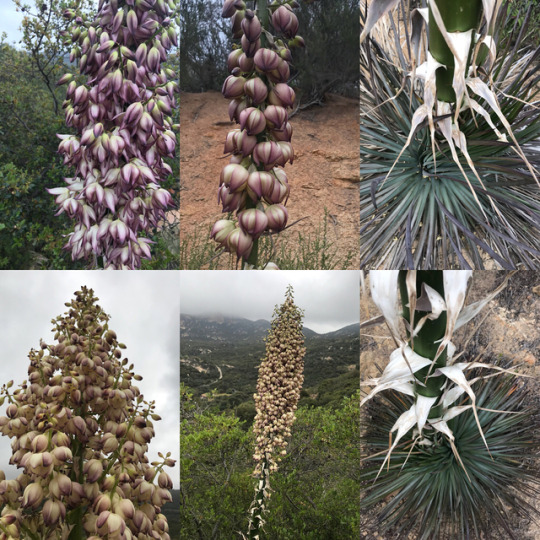
It’s that time of year again! #YuccaWhipplei #Yucca #ChaparralYucca #chaparral #calflora #CANativePlants #SanDiegoNativePlants #flowers #plants (at Jamul, California)
#calflora#flowers#yucca#canativeplants#chaparralyucca#plants#yuccawhipplei#sandiegonativeplants#chaparral
1 note
·
View note
Photo

Developing a relationship with this unfamiliar #Humboldt native perennial flower. Prunella v. aka "Selfheal" is used externally for it's antiseptic properties. #yerberia #NatureRelatedness #afrolatina #mastergardenerLA #calflora (at Avenue Of The Giants, Redwood State Park)
1 note
·
View note
Photo

Calflora has an app now. #calflora #canativeplants #nativeplants #californianativeplants #californiawildflowers
0 notes
Text
Botanical Tales of the PCT
by Matt Berger
A love for hiking and the natural world has always been a part of me. My first long distance backpacking trip, approaching 100 miles, happened when I was 14 at Philmont Scout Ranch. Carrying a 45-pound pack despite weighing a whopping 110 pounds while trekking the Rocky Mountains of New Mexico was physically grueling. Between the pain and welcome trailside respites I began noticing and taking photos of cool and seemingly exotic (as a mid-western Ohioan) plants along the trail. This trek, and the wild places I fell in love with as a 14 year old, was just the beginning of my journey.

I also had a passion for insects, reptiles, and amphibians that began as far back as I can remember—having collected dozens of field guides to identify these critters. Thanks to my experiences in nature, I turned to collecting and reading wildflower and tree field guides. My passions also turned me into a collector. Seeds from plants I’d find on weekend Scout trips were brought home and sown in home-made milk jug potters. After a few years of this, a native plant garden—packed with biodiversity—spread across my backyard in garden beds I usurped from my parents. I was officially hooked on botany.
I went to college at West Virginia University in the Appalachian Mountains studying horticulture. One summer, I returned to Philmont as an adult leader for another long distance backing trip with my friend Jon, and this time suffering was replaced with joy. These experiences led Jon to suggest an Appalachian Trail thru-hike when we graduated. With degrees in hand, we started the AT in Maine southbound in late June 2012… and I was humbled by the mountains once again. Having done minimal research into long distance hiking, I carried standard, heavy, gear and some nonsense items like a machete, fishing pole, and a sling shot. After four days, my right Achilles tendon started tearing and I had to get off trail in the Hundred Mile Wilderness. This hard lesson led me to drop 20 lbs from my pack whence I returned to the trail and met up with Jon. After that, the trail was fantastic. With the pain of hiking gone, the experience became about nature, friends, and living simply. Hiking also became research oriented. When I arrived in towns, and cell service allowed, I would look to identify the plants and fungi I’d photographed. When we finished the trail in early December, I found a job near the southern-terminus, growing plants in North Carolina—putting my horticulture degree to use!
After a year of growing plants in the greenhouses while dreaming non-stop about the Appalachian Trail and thru hiking, I realized I was more interested in plants in their natural environment than I was in growing them. What better way to see thousands of plant species, in habitat, than a thru hike of the Pacific Crest Trail? So, I saved up money and in April of 2014, started my first of two thru hikes of the PCT. I hadn’t hiked out west much, so virtually all the plants were new. Thus, began my photographic obsession with the PCT—I strove to document every unique species I saw the entire hike—and look them up in town or after the hike. I took thousands of photos of plants I would not identify until years later. On top of the cool plants, I had the time of my life. Astonishing views were complemented by the diverse habitats. Botany and thru hiking had become an addiction.
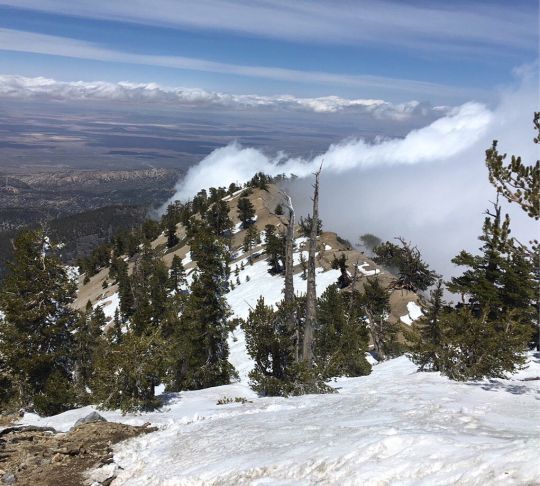
Modern technology, particularly georeferenced photos, allows for new and exciting approaches to understanding the natural world—like citizen science. Citizen science is participation by the general public in scientific undertakings (like observations) and research (uploading observations to databases). Photos of the natural world taken on smart phones can be uploaded to websites like Calflora (plants in California) or iNaturalist (all living things anywhere on Earth). With photos ready to upload, it is also important to enter other data about the observations like how many you saw, phenology, habitat, etc. This data is then available to other users and scientists whouse it to improve range maps, confirm new occurrences of something rare, or track the spread of invasive species!
In 2019 when I returned to hike the PCT again, I felt like a super-naturalist because I knew way more about what I was seeing. I took tens of thousands of photos and I uploaded every species I saw to citizen science sites. What is most exciting is finding range extensions for rare species. These help scientists gain a better understanding of species’ distributions and habitat preferences. One of my coolest range extensions came with the documentation of Piute mountains triteleia (Triteleia piutensis) in 2014 and again in 2019. This rare plant was first described to science in 2014, exactly one month before I saw the plant on my first PCT hike! I lacked photographic georeferencing abilities in 2014, but in 2019 I recorded the plant in 3 different locations along the PCT, all of which were new, previously unknown occurrences! Another plant that surprised me, and one that I wasn’t even aware of, was Collomia mazama. This beautiful blue wildflower is only found in the Crater Lake area, and I found two new populations of this species growing right along the trail! Also observed were new occurrences the recently described Claytonia serpenticola, which grows in the Klamath Mountains right along the trail. It may be more common than presently known due to it looking very similar to the common Claytonia lanceolata. Populations of these and other rare plants are protected by law, so these days, something as simple as a photo of a cool plant can have real-world importance in protecting biodiversity!

Triteleia piutensis
I encourage you to look closer on your next hike and you very well may find a rare plant growing along the trail. For me, waking up before a day of hiking is full of anticipation surrounding what is going to be seen that day. Even on the toughest climbs I encourage you to always be curious and observe what you are walking by.
Starting on February 16th, and for a total of five consecutive Tuesday nights, I will be sharing the tales of plants along the Pacific Crest Trail via a Zoom Webinar. I hope you can join me!
Register for Matt’s presentations HERE.
5 notes
·
View notes
Photo
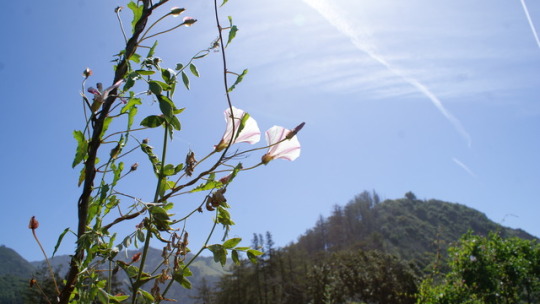

203 notes
·
View notes